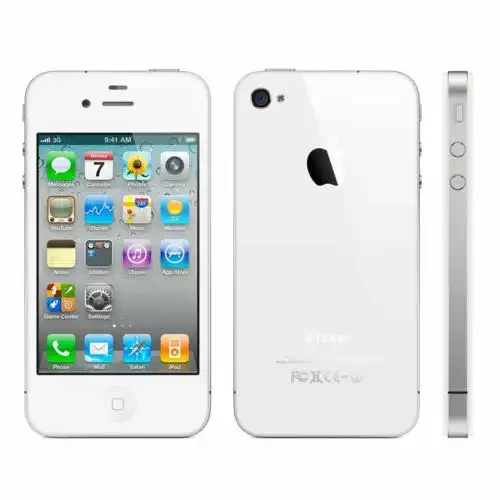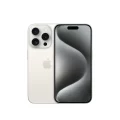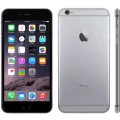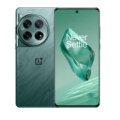- PRODUCTS
- Apple iPhone
- iPhone 4s Price in Kenya
iPhone 4s Price in Kenya



The iPhone 4s, released in 2011, was a significant upgrade to the popular iPhone 4 and made a notable impact on the Kenyan smartphone market. In this blog post, we’ll explore the various aspects of the iPhone 4s, including its design, performance, features, and pricing in the Kenyan context.
Design and Display
The iPhone 4s retained the same sleek and premium design as its predecessor, the iPhone 4. With its stainless steel frame and glass front and back, the device exuded a sense of quality and durability. The 3.5-inch Retina display, with its high pixel density of 326 ppi, provided users with a visually stunning and sharp viewing experience, making it one of the best displays on the market at the time.
One notable change in the design of the iPhone 4s was the addition of an improved antenna system, which addressed the “Antennagate” issue that had plagued the iPhone 4. This improvement helped to ensure more reliable and consistent cellular connectivity for Kenyan users.
Performance and Capabilities
Under the hood, the iPhone 4s was powered by Apple’s A5 dual-core processor, which offered a significant performance boost over the A4 chip found in the iPhone 4. This improved processing power, combined with 512MB of RAM, ensured a smooth and responsive user experience, whether users were browsing the web, running apps, or playing games.
The camera on the iPhone 4s was also a significant upgrade from the previous model. The device was equipped with an 8-megapixel rear-facing camera that could capture high-quality photos and 1080p HD video. The front-facing camera, on the other hand, was upgraded to a 0.3-megapixel (VGA) sensor, allowing for improved video calling capabilities.
Software and Ecosystem
The iPhone 4s shipped with iOS 5, which introduced several new features and improvements to the operating system. These included the introduction of Siri, Apple’s virtual assistant, as well as enhancements to the iCloud service, which allowed users to seamlessly sync their data across multiple devices.
The iOS ecosystem continued to be a major selling point for the iPhone 4s in the Kenyan market. The App Store provided users with access to a vast library of apps and games, catering to a wide range of needs and interests. This ecosystem, combined with the device’s performance capabilities, made the iPhone 4s a compelling choice for Kenyan consumers.
Pricing and Availability in Kenya
When the iPhone 4s was first introduced in Kenya, it was priced at a premium compared to other smartphones on the market. The base model, with 16GB of storage, was initially sold for around KES 70,000 (approximately $700 at the time). This high price point made the device inaccessible to many Kenyan consumers, who were still adjusting to the concept of smartphones and their associated costs.
However, as time passed and newer iPhone models were released, the price of the iPhone 4s in Kenya began to drop. By 2013, the 16GB model could be purchased for around KES 50,000 (approximately $500), making it more affordable for a wider range of Kenyan consumers.
Adoption and Impact in the Kenyan Market
Despite the initial high price, the iPhone 4s gained significant popularity in Kenya, particularly among the country’s growing middle class and tech-savvy consumers. The device’s sleek design, impressive performance, and access to the iOS ecosystem made it a desirable choice for those who could afford it.
The introduction of the iPhone 4s also had a broader impact on the Kenyan smartphone market. It helped to further raise awareness and demand for high-end smartphones, building on the momentum created by the iPhone 4. This, in turn, drove competition and innovation, leading to a more diverse and dynamic smartphone landscape in the country.
Siri and its Kenyan Adoption
One of the standout features of the iPhone 4s was the introduction of Siri, Apple’s virtual assistant. While Siri was initially designed with a focus on the English language and Western cultural references, its integration into the iPhone 4s presented an opportunity for Kenyan users to interact with the technology in their own context.
As Siri’s capabilities expanded over time, Kenyan users began to explore its potential for tasks such as setting reminders, checking the weather, and even performing basic web searches. However, the adoption of Siri in Kenya was not without its challenges, as the assistant’s understanding of local dialects, accents, and cultural nuances required ongoing development and refinement.
Conclusion
The iPhone 4s was a significant upgrade to the popular iPhone 4 and made a notable impact on the Kenyan smartphone market. Its premium design, improved performance, and enhanced camera capabilities, combined with the continued strength of the iOS ecosystem, made it a desirable choice for Kenyan consumers who could afford it.
While the initial high price point limited the device’s accessibility, the gradual decline in pricing over time allowed the iPhone 4s to reach a wider audience in Kenya. The device’s impact on the Kenyan smartphone market, in terms of raising awareness and driving competition, is undeniable.
The introduction of Siri, Apple’s virtual assistant, also presented an interesting opportunity for Kenyan users to interact with the technology in their own context, although the adoption of Siri in Kenya required ongoing development and refinement to better understand local dialects, accents, and cultural nuances.
Overall, the iPhone 4s remains an important chapter in the history of Apple’s presence in Kenya, showcasing the company’s ability to deliver innovative and influential devices that continue to shape the country’s smartphone landscape.
Specs
NETWORK
| Technology | GSM / CDMA / HSPA / EVDO |
LAUNCH
| Release Date | 2011, October 04. Released 2011, October 14 |
| Status | Discontinued |
BODY
| Dimensions | 115.2 x 58.6 x 9.3 mm (4.54 x 2.31 x 0.37 in) |
| Weight | 140 g (4.94 oz) |
| Build | Glass front (Corning-made glass), glass back, stainless steel frame |
| SIM | Micro-SIM Scratch-resistant glass back panel |
DISPLAY
| Type | IPS LCD |
| Size | 3.5 inches, 36.5 cm2 (~54.0% screen-to-body ratio) |
| Resolution | 640 x 960 pixels, 3:2 ratio (~330 ppi density) |
| Protection | Corning Gorilla Glass, oleophobic coating |
PLATFORM
| OS | iOS 5, upgradable to iOS 9.3.6 |
| Chipset | Apple A5 (45 nm) |
| CPU | Dual-core 1.0 GHz Cortex-A9 |
| GPU | PowerVR SGX543MP2 |
MEMORY
| Card slot | No |
| Internal | 8GB 512MB RAM, 16GB 512MB RAM, 32GB 512MB RAM, 64GB 512MB RAM |
MAIN CAMERA
| Back | 8 MP, f/2.4, 35mm (standard), 1/3.2", 1.4µm, AF |
| Features | LED flash, panorama, HDR |
| Video | 1080p@30fps |
SELFIE CAMERA
| Features | VGA, videocalling over Wi-Fi and 3G |
| Video | 480p@30fps |
SOUND
| Loudspeaker | Yes |
| 3.5mm jack | Yes |
COMMS
| WLAN | Wi-Fi 802.11 b/g/n, hotspot |
| Bluetooth | 4.0, A2DP, LE |
| Positioning | GPS, A-GPS, GLONASS |
| Radio | No |
| USB | 2.0 |
FEATURES
| Sensors | Accelerometer, gyro, proximity, compass |
BATTERY
| Type | Li-Po 1432 mAh, non-removable (5.3 Wh) |
MISC
| Models | A1431, A1387, iPhone4,1 |
| Colors | Black, White |
Reviews
Disclaimer Note
Disclaimer: We don't guarantee that the information on our page is 100% correct.




















